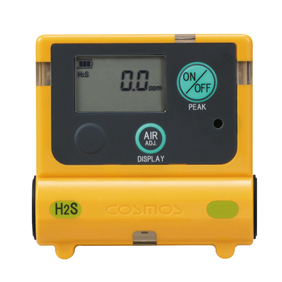H2s Gas Detector Alarm Levels

High alarms are based on 2 times osha pel values.
H2s gas detector alarm levels. It is a 2 year detector that can be used as a personal h2s monitor for oil gas and industrial applications among others. Missing sensor alarm advises which sensor is missing. Hydrogen sulphide h2s hydrogen sulphide gas detectors portable gas detectors and alarms from gas monitor point for the detection of dangerous levels of hydrogen sulphide h2s. To accurately monitor the many areas where this gas can pose a hazard industrial scientific offers a variety of h2s gas detectors including the ventis pro series the ventis mx4 and the mx6 ibrid personal multi gas detectors the tango tx1 and gasbadge pro single gas monitors the radius bz1 area monitor and the t40 rattler.
Workers are often under risk of gas exposure in situations where atmospheres cannot be controlled such as in confined space entry. Alarm levels for toxic gases. A two alarm unit should have alarm 1 at 1 9 ppm and alarm 2 at 4 0 or 4 5 ppm. Low battery warning provides a 30 minute alert.
Still when selecting such a sensor be sure it has the sensitivity and. Low alarms are based on osha pel and or niosh values. Featured items newest items best selling a to z z to a by review price. Msha no2 limits are 5 ppm for a high alarm.
Thus we would recommend that a single alarm unit be set to 2 5 or 3 0 ppm. Two 2 levels of alarm for each gas sensed. Lel sensor over range alarm protection. Gas alarms take priority over all other alarms.
An electrochemical sensor is the most practical type of h2s detector because it responds in seconds to a gas exposure. Gasalertmax cannot be accidentally shut off. Alarm levels it is important to note that whereas portable gas detection instruments measure and alarm at the twa levels instantaneous alarms are included to provide early warning of an exposure to dangerous gas concentrations. Provided standards exist all alarm settings are based on the following.
As its name implies the gasalertclip extreme works by triggering an alert to notify workers when a gas set point is exceeded and when there s an increased risk of poisoning. Various factors relating to the characteristics of a toxic gas release and the detector itself should be considered when setting alarm levels on toxic gas detectors to minimise risk of potentially dangerous exposure levels to personnel in a particular area of the workplace.

















